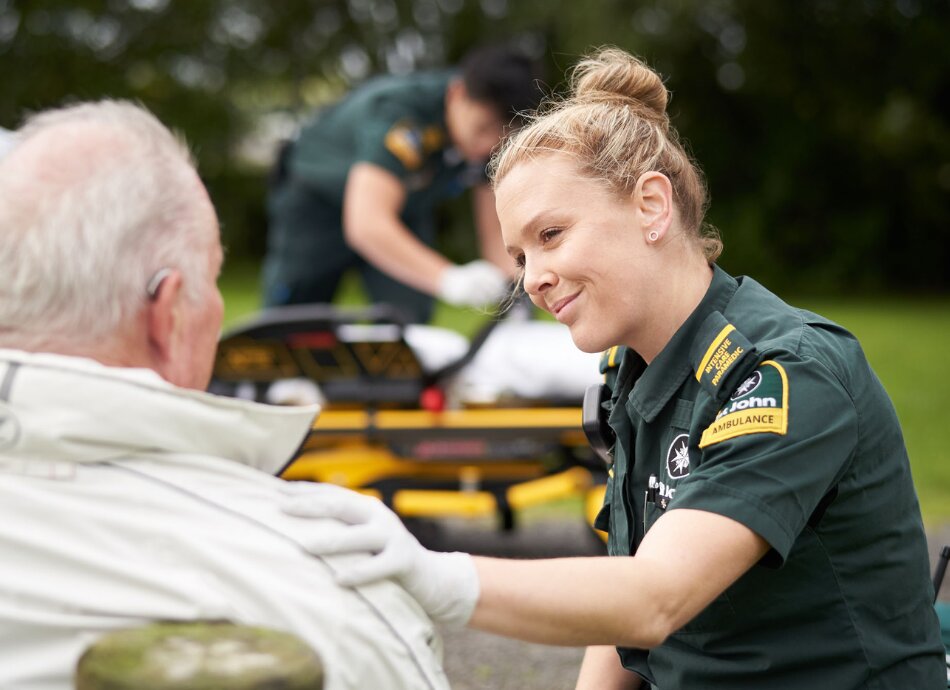A&E: Accident and emergency department in a hospital or clinic.
ACC: Accident Compensation Corporation – a NZ government organisation providing comprehensive 24-hour, no-fault personal accident cover.
ACL: Anterior cruciate ligament – a commonly injured part of the knee.
ADHD: Attention deficit hyperactivity disorder.
AF: Atrial fibrillation – an irregular, often rapid heartbeat.
BMI: Body mass index, a measure of body fat based on your height and weight.
BP: Blood pressure.
BPM: Beats per minute (heart).
BS: bowel sounds. BS N means 'bowel sounds normal'.
Chemo: Chemotherapy.
COPD: Chronic obstructive pulmonary disease – a progressive respiratory/lung disease that makes it hard to breathe. Also called CORD.
CPAP: Continuous positive airway pressure – a method of respiratory therapy for people with obstructive sleep apnoea (OSA).
CPR: Cardiopulmonary resuscitation, also called mouth-to-mouth resuscitation.
CVA: A stroke. Stands for Cerebrovascular Accident.
CXR: Chest X-ray.
DNA: Did not arrive or did not attend – you'll sometimes see this on hospital clinic notes.
DNR: Do not resuscitate – a medical order meaning providers should not perform CPR.
DVT: Deep vein thrombosis – a blood clot in a deep vein, usually in the leg.
ED: Emergency department.
EDD: estimated date of delivery for a baby.
ECG: Electrocardiogram for monitoring the heart and testing for problems.
ENT: Ear, nose and throat.
FBC: Full blood count, a type of blood test.
F/U: Follow up.
GA: General anaesthetic.
GORD: Gastroesophageal reflux disease – a problem that happens when your stomach contents leak back into your oesophagus/throat.
GP: General practitioner or family doctor.
Gynae: Gynaecological service or department.
HbA1c: Haemoglobin A1c, known as glycated haemoglobin and linked to measuring glucose in the bloodstream.
HDL: High-density lipoprotein cholesterol, or ‘good’ cholesterol.
HDU: High dependency unit – an area in a hospital or clinic where patients can be cared for more than on a normal ward, but not to the point of intensive care.
HIP: Health improvement practitioner.
HIV: Human immunodeficiency virus – the virus that causes AIDS.
HR: Heart rate, expressed as beats per minute.
HRT: Hormone replacement therapy, called MHT when used for menopause symptoms.
HPV: Human papilloma virus – a virus that causes cervical cancer.
HS: heart sounds. HS 1+ 2+ 0 and HS dual + nil both mean you have the normal 2 heart sounds and no extra sounds.
IBD: Irritable bowel disease – a name for 2 digestive disorders; ulcerative colitis and Crohn’s disease.
IBS: Irritable bowel syndrome – a problem with the large intestine.
ICU: Intensive care unit – specialist care unit in hospital.
IM: Injection into a muscle.
Imp: stands for impression – you'll sometimes see this in your notes followed by your healthcare provider's impression (or thoughts) about what's going on with your health.
IUD: Intrauterine device – a type of birth control for women.
IV: Intravenous – injection into a vein.
LDL: Low-density lipoprotein cholesterol, or ‘bad’ cholesterol.
LMC: Lead maternity carer, responsible for your care during pregnancy, labour, birth and post-natal (after the birth)
LMP: Last menstrual period.
MAPU: Medical Assessment and Planning Unit – a place in hospital you go to get your health problem worked out when you aren’t sick enough to need be in hospital, but need tests or specialist assessment before you can go home.
Meds: Medication or medicines you might be given or prescribed.
MHT: Menopausal hormone therapy – hormone replacement therapy used at the time of menopause.
MI: Myocardial infarction – heart attack.
MMR: Measles, mumps and rubella – a vaccine for 3 diseases.
MRI: Magnetic resonance imaging – a scan used to form pictures of the body and anatomy.
MS: Multiple sclerosis – a disease of the nervous system.
MSU: Mid-stream urine sample.
NAD: No abnormality detected
NBM: Nil by mouth – generally used when you are in hospital and not allowed to eat before you have surgery, or if you have swallowing problems.
NHI: National health index – your NHI number is a unique number that identifies every person who uses health and disability services in NZ.
NICU: Neonatal intensive care unit – cares for premature infants (babies born early).
NKA, NKDA: No known allergies, no known drug allergies.
NP: Nurse practitioner
NSAID: Non-steroidal anti-inflammatory drug.
Obs: Observations or routine checks like blood pressure, heart rate and temperature to monitor you while you recover during a hospital or clinic stay.
OE: On examination. You might find this in your notes before a description of examination findings.
OR: Operating room where surgery is carried out.
OT: Occupational therapist.
Paeds: Paediatric services or paediatricians (children's services or child health specialists).
PET: Positron emission tomography – a type of X-ray test.
Physio: Physiotherapist.
PICC: A peripherally inserted central catheter (also called a PICC line) – a long, thin tube inserted through a vein in your arm.
PPE: Personal protective equipment such as masks, gowns, gloves, face shields.
PR: per rectum, means up inside your bottom if it's to do with a suppository (medicine) or an examination of the lower part of your bowel or prostate. It can also mean pulse rate (heart rate).
PRbpm: Pulse rate / beats per minute
Psych: Refers to psychiatry or the psychiatric ward.
QID: 4 times a day – your doctor might write this on your prescription.
RAT: Rapid antigen test.
RDI: Recommended dietary intake.
RN: Registered nurse.
RSV: Respiratory syncytial virus – a virus that causes infections in children.
Rx: Prescription.
SIDS: Sudden infant death syndrome.
SL: Sick leave.
SOAP: An acronym healthcare providers use to put their ideas in order when writing in your notes. It stands for subjective, objective, assessment, plan.
STI, STD: Sexually transmitted infection or disease.
Tb: Tuberculosis – an infection of the lungs.
TIA: Transient ischaemic attack – a small stroke.
TFT: Thyroid function test.
UTI: Urinary tract infection.






